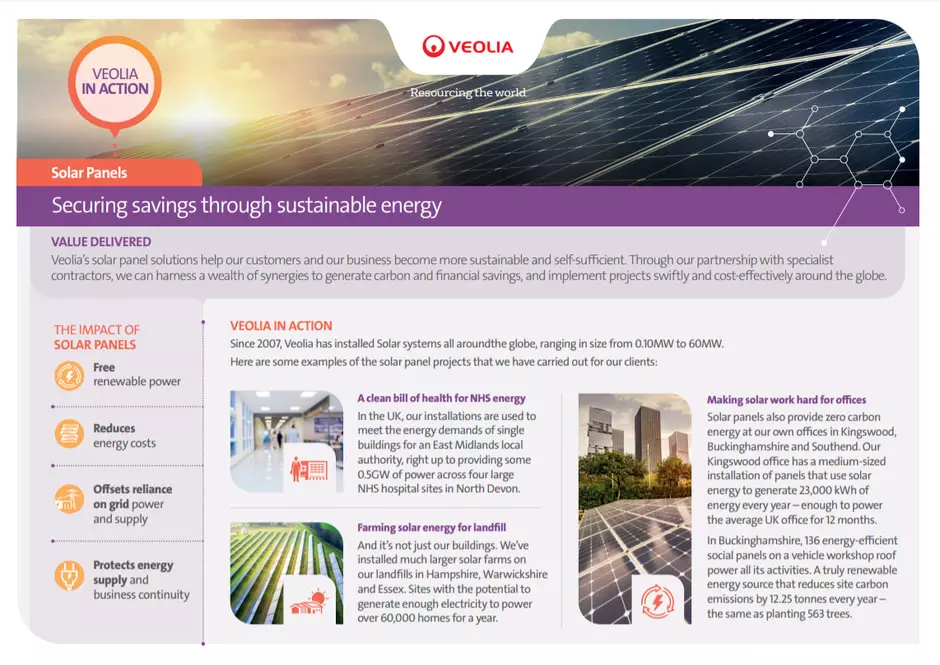What Is Solar Photovoltaic (PV) Technology?
Simply put, solar photovoltaic (PV) technology is a renewable energy source that converts sunlight into electricity using thin sheets of semiconducting materials, such as silicon. When sunlight falls upon the solar panel, the photovoltaic cells absorb the energy and release electrons to generate a flow of electricity that can be utilised by homes and industries. Solar PV solutions produce zero emissions during operation, making them a much more desirable solution when compared to traditional fossil fuel energy methods.
Besides the clear benefits for our environment, a key benefit of solar panels is the versatility they possess. Panels can be installed almost wherever there is a good source of sunlight, for example: on rooftops, grazing land or large-scale solar power plants.
How Does Solar PV Work?
Solar PV relies on cells made of semiconductor materials, such as silicon, which will then absorb photons from sunlight and release electrons. The flow of electrons creates an electric current, which can then be captured and converted into usable electricity for either homes, businesses or communities, when on a much larger scale. Typically, PV cells are connected in series and arranged in panels to provide a larger surface area for capturing sunlight. Fortunately, the electricity generated by the panels can be used immediately or stored in batteries for later use.
Creating Value With Solar PV
Solar photovoltaic (PV) technology can create value for you in several ways and continues to become a feasible long-term solution to energy creation. Firstly, solar panels reduce your reliance on the grid, which can help you save money on your utility bills long-term. Secondly, if you generate excess electricity, you can sell the power back to the grid, thanks to the Smart Export Guarantee ( SEG ). Additionally, investing in solar PV technology can increase the value of your property, as potential buyers may be attracted to the cost savings and environmental benefits of owning a solar-powered home.
> Learn more about the advantages of Solar PV
How Long Does it Take for Solar Panels to Pay for Themselves?
The time it takes for solar photovoltaic (PV) technology to pay for itself, also known as the payback period, varies depending on several factors. However, generally, a solar PV system can pay for itself in anywhere from 5 to 15 years, with the average payback period being around 8 years.







